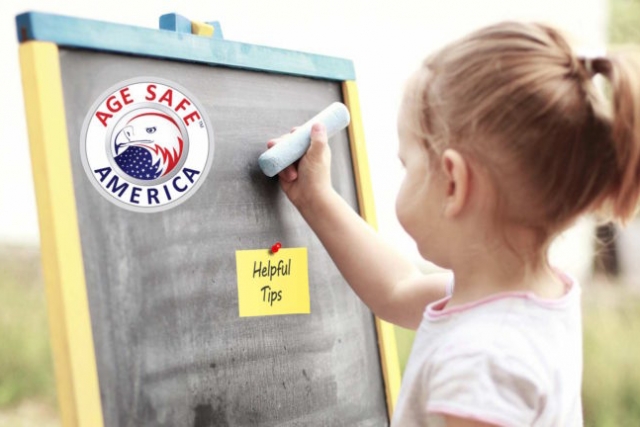Safety. Security. Longevity.
Childproof Your Home
Accidents are the leading cause of death and injury among children in the United States, far surpassing diseases as a health threat.
As a parent, you may often fear for your child’s health and safety. The average household is full of objects and substances that could potentially be harmful to a child. According to Safe Kids Worldwide, young children have an increased risk of accidental injury in the home simply because that is where they spend most of their time. Everyone knows that children have a big appetite for curiosity, and they love to push boundaries. For parents, grandparents and caregivers, this means staying at least one step ahead and trying to anticipate accidents before they happen.

About 2-1/2 million children are injured or killed by hazards in the home each year. The good news is that many of these incidents can be prevented by using simple child safety devices. Consumer Product Safety Commission
Safety. Security. Longevity.
Age Safe® America
Since 2015 a national membership, training, advocacy and services organization.
Child proofing your home can be overwhelming to a new parent. Here are some child safety tips and devices that can help reduce injuries to young children and give you peace of mind knowing that you addressed critical safety issues in your home.
- Use safety gates and barrier devices to help prevent small children from falling down stairs and to keep them from getting into other unsafe areas of the home. At the top of the stairs, the U.S. Consumer Product Safety Commission recommends using gates that screw to the wall because they are more secure than pressure gates. Also, check to see whether the gate manufacturer recommends using the gate at the top of the stairs.
- Keep a cordless phone on hand to use while watching children. Cordless phones allow you to answer the phone without leaving your child. In addition, eliminating phone cords helps to reduce the risk of strangulation.
- Install smoke detectors on every level of your home, outside sleeping areas and inside bedrooms. Install carbon monoxide detectors near all sleeping areas. Check batteries at least every month and replace annually.
- Cover electrical outlets with outlet plugs and safety caps throughout the home to prevent accidental shock or electrocution.
- Install window guards and safety netting properly to help prevent falls from windows, balconies and decks. At least one window in each room should be easily accessible for escape in the event of a fire.
- Use toilet lid locks or clamps to help keep curious toddlers and their toys from falling in to the toilet, a serious drowning hazard.
- Help prevent hot water burns by using anti-scald devices on faucets and showerheads, and set the thermostat on your water heater to 120 degrees Fahrenheit or less.
- Use window blind cord safety tassels, tension devices and cord wind-ups on window blinds to help prevent strangulation in the loops of dangling cords. Keep cords out of reach of small children.
- Cover sharp edges and hard corners with corner and edge bumpers to reduce the impact of bumps and falls against furniture and fireplace hearths. These are particularly important during the crawling and early walking stages of your child’s development.
- Install heat-resistant oven locks and dial guards in your kitchen to help prevent accidental burns or fire hazards. On the stovetop, keep pot handles away from small hands by using rear burners whenever possible and remembering to turn handles toward the back of the stove.
- Help avoid pinched or crushed fingers with door stops, door holders, and finger guards that attach to doors and door hinges. As an added benefit, finger guards can help prevent children from accidentally locking themselves in a room without you.
- Use door knob covers to help keep your child from entering bathrooms and other potentially dangerous areas without you. A door knob cover increases the size of the door knob, making it difficult for small hands to grasp and turn. However, make sure that an adult is able to open the door quickly in case of emergency.
- Install safety latches and locks on cabinets and drawers to help prevent poisonings and other injuries. Using these devices in kitchens, bathrooms and other areas can help prevent children from accessing hazardous items, such as medicines, household cleaners and knives. For additional protection, store potentially dangerous items up and beyond your child’s reach.
For all items above, be sure to read and follow the manufacturers’ instructions on proper installation and proper use.

